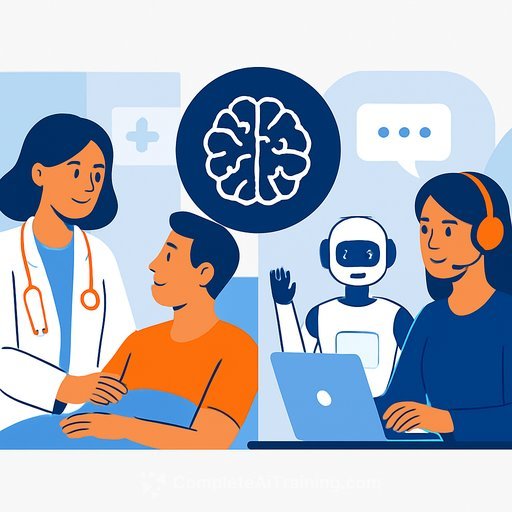Healthcare AI That Clinicians Actually Trust: Small Wins, Ambient Documentation, Real Results
Healthcare AI works best when it removes friction from daily work and proves value in tight loops. As Dr. R. Ryan Sadeghian highlights, consistent, practical wins beat chasing the newest model for its own sake. Ambient documentation is the clearest place to start because it gives time back while keeping clinicians in control.
Why small wins beat big bets
- They produce measurable results fast: fewer clicks, fewer late notes, less after-hours work.
- They build trust because clinicians see the benefit inside their workflow, not outside it.
- They limit risk and cost while you learn what actually sticks.
- They make adoption easier across service lines and shift types.
You don't need the newest model to make this work. You need reliability, smart integration with the EHR, and a clear feedback loop with clinicians.
Start with ambient documentation
- Generate first-draft notes from the conversation, mapped to SOAP/HPI/ROS/PE/Plan.
- Auto-assemble after-visit summaries and patient instructions from what was said.
- Surface structured data (problems, meds, allergies) for quick review and acceptance.
Clinician trust is the lever. Keep a human-in-the-loop, make edits one click away, and show what the AI heard and why it drafted each section.
Implementation checklist
- Workflow fit: Map high-volume encounter types and specialty nuances before go-live.
- Governance: Stand up a clinical safety group to review prompts, outputs, and edge cases weekly.
- Privacy and security: BAA in place, PHI handling defined, role-based access, audit logs, data retention limits.
- EHR integration: Use FHIR/SMART integration and standard sections so notes land in the right place. See HL7 FHIR.
- Pilot design: 10-30 clinicians, 2-3 specialties, 6-8 weeks, with clear inclusion/exclusion criteria.
- Success metrics: Minutes saved per note, reduction in after-hours documentation, note completeness/quality, user adoption, edit rates, safety events (zero as the goal).
- Feedback loops: Daily bug triage during week 1, then weekly huddles; capture top 10 friction points and fix them.
- Training: 30-minute onboarding, tip sheets, and quick-reference videos. For role-based upskilling, see AI courses by job role.
Vendor checklist (beyond model hype)
- Accuracy in noisy rooms, accents, and multi-speaker settings; show blinded test results by specialty.
- Latency under load; uptime and clear SLAs.
- On-device vs. cloud processing; where audio and transcripts are stored; data deletion timelines.
- Editing UX: inline acceptance, smart templates, keyboard shortcuts.
- Specialty adaptability: cardiology vs. pediatrics vs. orthopedics language packs.
- Cost transparency: per-minute or per-encounter pricing that scales without surprise fees.
- Controls: Confidence scores, redaction, off-switches, and audit trails for every note.
Risk and compliance basics
- Consent: Clear signage or verbal consent policy for audio capture.
- Policy coverage: Recording rules, data retention, and access control documented.
- Bias and safety: Monitor for hallucinations, incorrect attributions, and missing negatives.
- Fallback plan: If AI fails, the workflow still works without disruption.
- Risk management: Use a lightweight, repeatable process. Reference the NIST AI Risk Management Framework.
After ambient documentation: what's next
- Inbox triage and message summarization with quick-reply drafts.
- Priors and referrals: Auto-create letters with source citations from the chart.
- Coding assistance: Suggest likely codes with clinician confirmation inside the note.
- Payer workflows: Prior auth packet assembly with required clinical criteria highlighted.
The principle stays the same: ship a focused use case, measure, improve, then expand. Clinician trust and workflow fit outrun model headlines every time.
Tags: clinical workforce, clinical AI
Your membership also unlocks:






